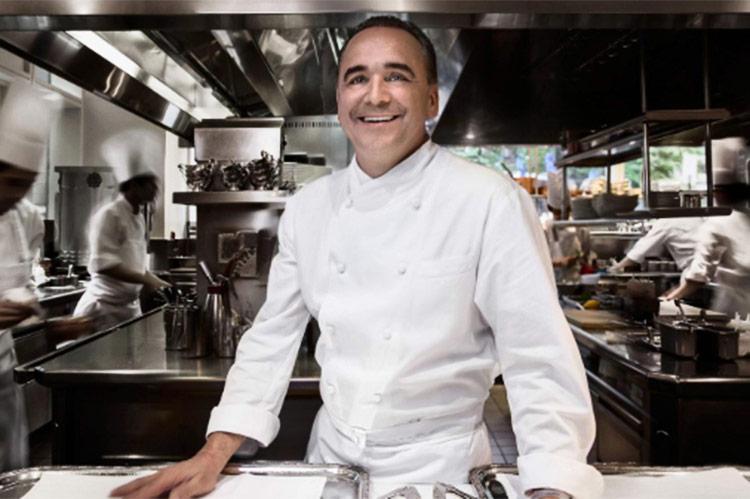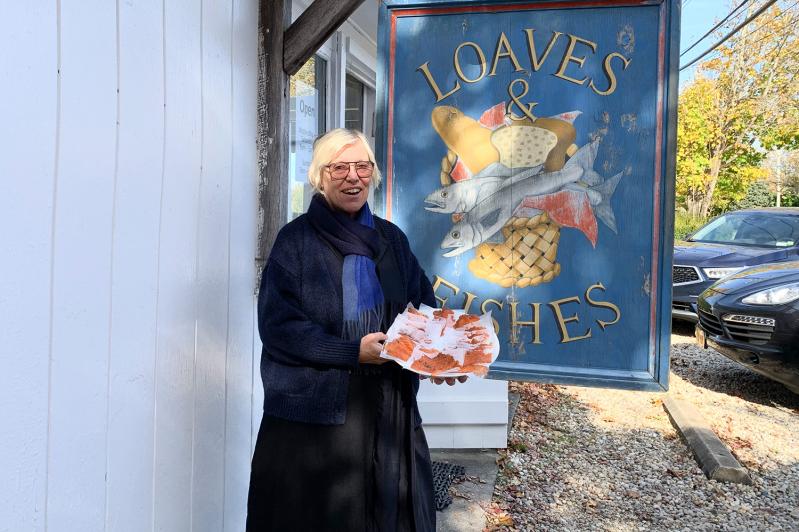There are two books about cooking that have been published recently, one with deep, deep roots in the community and one more along the lines of celebrity chef autobiography with recipes. What these two books — “Bridgehampton Inn and Restaurant: A Look and Cook Book” by Sybille van Kempen and Brian Szostak and “JGV: A Life in 12 Recipes” by Jean-Georges Vongerichten — have in common is they are both tied to local high-end restaurants: the aforementioned Bridgehampton Inn, and the Topping Rose House, also in Bridgehampton. Granted, Topping Rose House is only one of Mr. Vongerichten’s 36 restaurants throughout the world, but that is local enough for some attention.
As far as most “local” cookbooks go, the majority of them seem to be written by celebrities or celebrity wives: Gwyneth, Jessica, Hilaria, and Katie Lee. Some are written by chefs who have homes here: Bobby Flay, Michael Symon, Eric Ripert. There are farms and journalists and organizations that have produced books: Quail Hill, Sylvia Lehrer, and L.V.I.S. The ne plus ultra of local cookbook authors would be Ina Garten, a.k.a. the Barefoot Contessa, whose new books appear as regularly and reliably as goldfinches, monarch butterflies, and Canada geese. When a new Barefoot Contessa cookbook comes out, I know I’ve got some fresh recipes and holiday shopping all wrapped up.
Up until now, there have been no
local restaurant cookbooks. The Bridgehampton Inn cook book is totally modern in that it has QR code technique video links throughout and FaceTime shopping offered at the end. The FaceTime shopping is offered because the Bridgehampton Inn is attached to the Loaves and Fishes Cookshop. If you have ever dined at the Bridgehampton Inn, you probably found the dimpled handblown water glasses and much of the other glassware, stemware, cutlery, and china irresistible and original. The technique videos are excellent and even at a mere two-plus minutes long, very helpful. You can learn how to bone a chicken “chicken steak” style, coincidentally a technique learned from Jean-Georges Vongerichten.

The Bridgehampton Inn and Restaurant, along with Loaves and Fishes Cookshop and food shop in Sagaponack are all still a family affair and a legacy of Anna Pump. Because of this cross-pollination, you can find some of the dishes and recipes of the Bridgehampton Inn also prepared at the food shop. The gravlax, buttery cornbread, potato and parsnip gratin, and “split second” cookies are there for takeout in case you just can’t get around to cooking yourself.
The book begins with the history of the inn, an homage to Sybille’s parents Detlef and Anna, a foreword by Julie Andrews, a fan, and a lot of pictures of and credit to the staff, such as the beautiful Cerene Desilvia, the innkeeper who has been with the family since 1994. Kyle Fengler, Ms. van Kempen’s son, is the inn’s renowned mixologist, and there is a deservedly big chapter dedicated to his quirky and complex concoctions.
Chef Brian Szostak is extremely talented and changes the menu monthly. His recipes in the book vary from rich and complicated to light and accessible, always with an eye toward local and seasonal ingredients.
The photos, layout, and recipes are beautifully presented. There are many recipes that I can’t wait to try like the orange juice French toast, kung pao cauliflower, and beet falafel.
“JGV: A Life in 12 Recipes” is similar to Eric Ripert’s autobiography “32 Yolks,” but with recipes. It is also reminiscent of Daniel Boulud’s “Letters to a Young Chef.”

If you are a fan of Mr. Vongerichten (as I am) or are a chef who enjoys other chef’s stories (as I am), then you will enjoy this book. But if you find longwinded discussions of the hardships of professional kitchens, the life-changing magic of different types of salts, or the utterly vital importance of cleanliness, then this may not be for you. The 12 recipes, which reflect the various restaurants and countries he has cooked in and learned from, range from the seemingly simple egg caviar for two to the more complex, it-takes-a-village poached foie gras with fennel and caramel-black pepper sauce.
Some things I already knew: Sharp knives are important. Some things I did not: A sauce for a delicate fish or meat should pack three times the flavor of the protein itself. His appreciation and abilities with Thai, Vietnamese, and other Southeast Asian flavors layered over his French training make for interesting reading and recipes. His guacamole with peas inspired such an internet frenzy that even Barack Obama tweeted about it. He also takes credit for molten chocolate cake, the ubiquitous 1980s dessert on every high-end menu.
I would never suggest that a young cooking enthusiast not go to culinary school, but Jean-Georges, along with many other accomplished chefs, says he prefers his new kitchen employees “green,” as in, he can train them the way he wants them and not have to “untrain” them. This is often the French view of an honorable skill that is learned at a very early age.
Ironically, at the end of the book, he describes the time his son, Cedric, came to him and said he wanted to follow in his father’s footsteps. “I told him ‘No! Being a chef, it’s no kind of life. It’s a hard, hard life.’ ” This from one of the most successful and prolific chefs in the world.
Nobody becomes a chef or opens a restaurant unless he or she deeply loves the work and doesn’t mind spending the majority of his or her life there. Jean-Georges’s story tells us about the military precision needed, the disciplined teamwork, the hardships and triumphs of international success. Sybille’s book shares with us the joy of that teamwork, the pleasure of carrying on and expanding a family legacy, and the satisfaction to be had in making guests comfortable and very well fed.
Mr. Vongerichten’s book is a Nenohi Honyaki Dentokougeishi Sakimaru Takobiki knife ready to slice into engawa. Ms. van Kempen’s book is a warm and chewy gingersnap, fresh from the oven.





